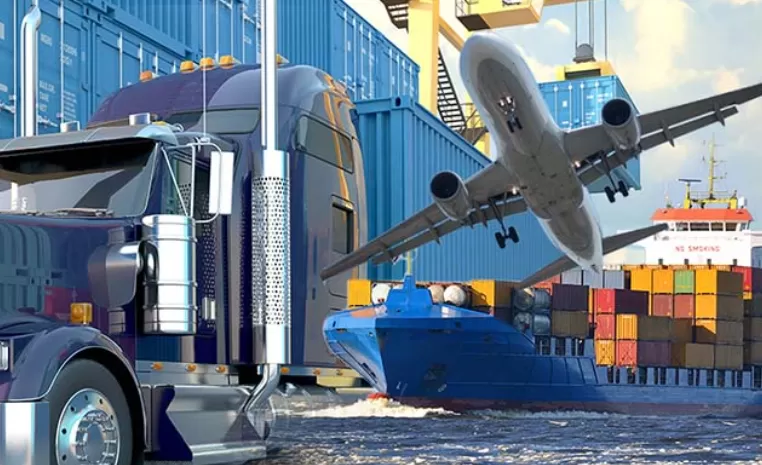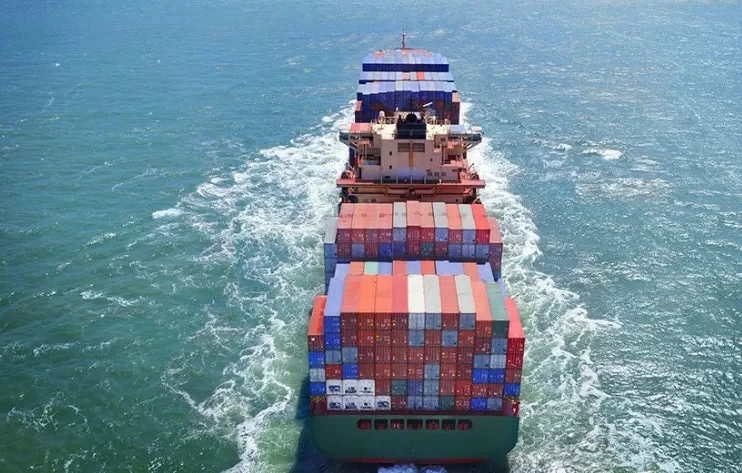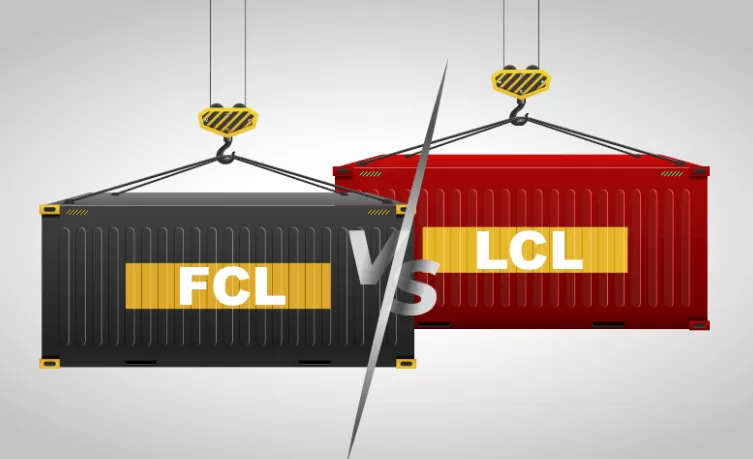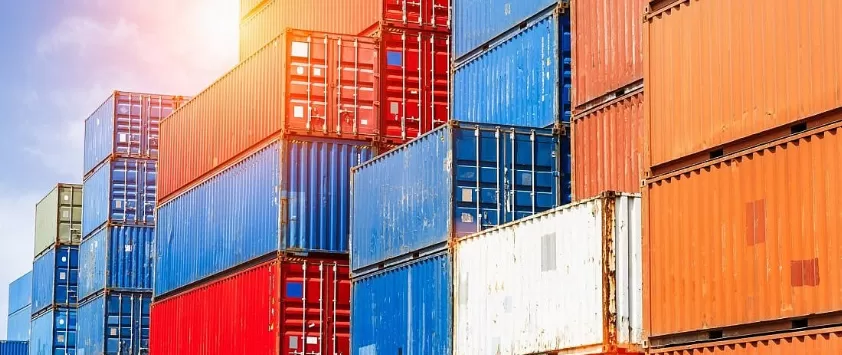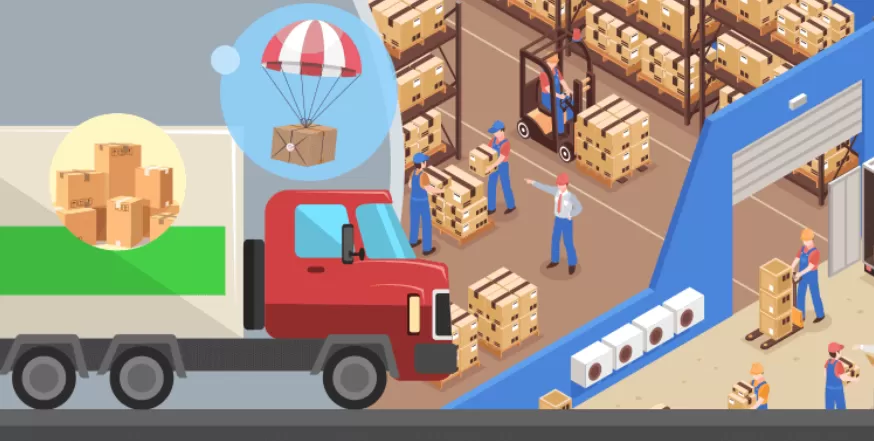Here’s the thing: if you’re importing from China into Cologne you need two things on one page — quick, practical answers to “how much and how long?”, and step-by-step operational detail that you can act on today. Below I’ll give both: clear comparisons, route advice, decision rules (FCL vs LCL, air vs express), an example landed-cost calculation you can copy, and an RFQ template to get accurate quotes fast.
Quick note on sources: I used live route & rate references from freight marketplaces and forwarder guides so the sample ranges below reflect market snapshots (examples cited where used).
Are you ready?
Get real-time quotes for freight Cologne
Get Quotes
Quick highlights — the one-minute answers
Typical transit times (rough ranges): Sea (China → Cologne via NW European ports): ~30–70 days depending on routing and transshipment; Rail (China → Germany): ~18–25 days; Air: ~3–10 days; Express courier: 1–5 days for small parcels.
Typical sample price ranges (market snapshot examples): 20′ FCL from Guangzhou → Cologne from around $7,400–$10,000; LCL 1 CBM from around $800; Air 100 kg from around $970. These are example ranges—get a live quote before booking.
Rule of thumb: For bulk, non-urgent cargo pick FCL by sea. For time-sensitive or high-value small shipments, air or express. For balanced transit time and cost, China-Europe rail is a solid middle ground if origin and schedules fit.
1. Mode comparison at a glance (sea / rail / air / express / sea/ sea-truck)
| Mode |
Typical transit time (example) |
Typical cost driver |
Best when |
| Sea — FCL (20′/40′/40HC/45HC) |
30–70 days |
Freight per container (market rates) |
Large volumes, lowest $/CBM |
| Sea — LCL (1 / 5 / 10 CBM) |
35–75 days |
Price per CBM + consolidation fees |
Small volume, cost-sensitive |
| Rail (China → Germany) |
18–25 days |
Price per TEU/weight + corridor availability |
Medium urgency, palletized cargo |
| Air (100kg / 200kg) |
3–10 days |
Price per kg (or volumetric kg) |
Urgent shipments, high value/low volume |
| Express (10kg / 120kg) |
1–5 days |
Courier tariffs (per kg / zone) |
Small parcels, B2C / urgent samples |
| (sea + express last mile) |
20–40+ days |
Sea + express tail cost |
FBA sellers needing quick last-mile |
| (sea + trucking / drayage) |
30–70 days |
Sea + trucking / drayage |
Heavy/bulky pallet shipments requiring trucking |
(These ranges mirror marketplace snapshots and forwarder route guides — use them to narrow options, not as final quotes.)
2. How much does shipping from China to Cologne cost?
Let’s break it down: any final price is the sum of several building blocks. Know these and you can read a quote without being surprised.
Base pricing components
Origin costs — pickup, export docs, inland truck in China.
Freight (main leg) — ocean container rate or air rate. Market-sensitive.
Surcharges — BAF/CAF (fuel), PSS, security, terminal handling charges (THC).
Destination charges — port handling, customs clearance fees, import agent fees.
Duties & VAT — customs duty (based on HS code and CIF) and German VAT (standard 19%).
Inland delivery — drayage, trucking or barge to Cologne, or rail door service.
Insurance — optional; recommended for LCL and high-value cargo.
Why numbers vary a lot: freight market conditions, seasonal demand (e.g., pre-Chinese New Year, Q3 surge), and the route you choose (direct vs transshipment, Rotterdam vs Hamburg vs Antwerp) all change rates dramatically. For example market snapshots show a 20′ FCL from Guangzhou → Cologne can start from ~$7,400 in given windows — but this is a moving number.
3. Transit times: realistic expectations
Ocean (via NW Europe ports then inland): plan for ~30–70 days door-to-door. If vessel routing includes extra transshipments it can push toward the high side.
Rail (China → Germany): ~18–25 days depending on routing and schedule reliability; good when speed matters but air is too expensive.
Air: 3–10 days door-to-door depending on security checks and handovers.
Express (DHL/UPS/FedEx): 1–5 days, best for small urgent parcels.
Tip: always add buffer days for pickup, customs clearance and last-mile. In short: quoted transit time rarely equals guaranteed delivery time.
4. Main shipping routes to Cologne
Let’s map the real choices — route selection drives cost & time.
China port → Rotterdam → Road/rail to Cologne
Most common. Rotterdam is a mega-hub with frequent sailings; trucking or inland barge to Cologne is simple and mature.
China port → Antwerp/Hamburg → Truck to Cologne
Sometimes cheaper or faster depending on carrier loops and congestion.
China → Direct rail to Cologne (or rail → Duisburg/Cologne road)
Faster than ocean; good for palletized goods, predictable schedules when service is stable.
China → Airport (Frankfurt / Cologne Bonn / nearby) → truck to Cologne
For urgent high-value goods.
Multimodal mixes (sea + rail or sea + express) — e.g., sea headhaul + rail inland or sea + courier tail (sea) for FBA.
Why choose differently?Cost (sea cheapest), time (air fastest), predictability & frequency (rail often better than transshipment-heavy sea). Also check last-mile options to Cologne — barge to the Rhine can be cheaper for heavy loads but slower.
5. Sea freight detail — FCL and common container types
When to use FCL: when volume approaches a full container, or when you want less handling and lower damage risk.
Common container types
20′ container (20′GP) — standard: ~33–37 CBM capacity (depends on packing). Snapshot start prices for certain routes can be in the $7k+ range for the main leg (market sensitive). Freightos
40′ / 40′HC — roughly double volume of 20′, watch weight limits.
45′HC — useful for bulky but light goods where volume, not weight, limits.
Costs to watch: demurrage and detention (if you don’t return equipment on time), THC (terminal handling), documentation fees. If your cargo is heavy but small in CBM, weight restrictions may change the economics.
6. Sea freight detail — LCL (1 / 5 / 10 CBM)
When to choose LCL: small consignments, multiple SKUs, or when you can’t fill a container. But understand the tradeoffs:
Pricing: charged per CBM; sample snapshots show 1 CBM LCL lanes from ~$800 on some routes — but consolidation fees, CFS handling and administration can add materially. Freightos
Risk & time: longer door-to-door times (consolidation & deconsolidation steps), higher handling risk — insure appropriately.
Decision rule (practical): if your load is > ~8–12 CBM (exact break-even depends on container rates), evaluate FCL. Use a break-even calculator: compare (FCL unit cost per CBM) against (LCL cost per CBM + handling).
7. Air freight (100 kg / 200 kg examples)
Air pricing basics: carriers charge per kg or per volumetric kg (volumetric factor = length×width×height / 5000 for cm → kg). For example, a 100 kg consignment may be charged on actual weight or volumetric weight — whichever is higher. Live market snapshot examples show 100 kg air shipments from China → Cologne from roughly $970+ for certain routes; heavier consignments (e.g., 200 kg) will have different per-kg economics.
When to choose air: urgent, lightweight, high-value goods, or when inventory carrying cost exceeds the air premium.
8. Express courier (10 kg / 120 kg)
10 kg parcels are typically ideal for express carriers: door-to-door, customs clearance bundled. Snapshot examples show express pricing near $300+ for 10 kg on some corridors (market dependent).
120 kg is tipping point — some couriers price heavy parcels at freight-like rates; compare express vs air freight quotes. Always check the courier’s size/weight thresholds.
9. Sea vs Sea
(sea + express last mile): ocean headhaul to EU port, then express (courier) tail to recipient or Amazon FBA. Good for small cartons that need faster final delivery and seamless customs processing for FBA.
(sea + trucking / drayage): ocean headhaul + trucking to final warehouse. Cheaper for pallets and heavy cargo.
FBA sellers: sea is popular for small sellers who want consolidated sea cost with quicker final mile into Amazon, but expect higher tail costs than sea-card trucking. Check Amazon’s inbound requirements and labelling carefully.
10. FCL vs LCL
A quick logical flow (practical):
If volume ≥ X CBM → likely FCL. Typical practical break-point: approx 8–12 CBM depending on container rates and cargo density.
If many SKUs + small qty → LCL may be simpler; central consolidation can reduce inventory management headaches.
If risk of damage or sensitive supply → FCL reduces handling points.
Break-even example (how to compute): compare total FCL cost ÷ usable CBM vs LCL cost per CBM (including all handling). I’ll show one worked exemplar in the next section.
11. Worked example — landed cost for a sample FCL shipment (step-by-step)
freight forwarding
Get real-time quotes for freight Cologne
Get Quotes
You’ll want to see the arithmetic. Below is a realistic worked example (numbers are illustrative — replace with live quotes for real decisions).
Scenario: 20′ FCL from China → Cologne.
FOB value (goods): $12,000.00
Ocean freight (main leg): $7,500.00 (example market snapshot ballpark)
Insurance: 1% of FOB → 12,000 × 0.01 = $120.00
CIF (Customs value) = FOB + Freight + Insurance
CIF = 12,000 + 7,500 + 120 = 19,620.00
Duty rate (example) = 4% → Duty = 19,620 × 0.04 = 784.80
VAT (Germany standard 19%) = 19% of (CIF + Duty)
VAT base = 19,620 + 784.80 = 20,404.80
VAT = 20,404.80 × 0.19 = 3,876.91 (rounded)
Port charges = $800.00 (example)
Inland trucking to Cologne = $600.00 (example)
Now add them all (digit-by-digit):
FOB = 12,000.00
Freight = 7,500.00 ⇒ subtotal 19,500.00
Insurance = 120.00 ⇒ CIF = 19,620.00
Duty = 784.80 ⇒ add ⇒ 20,404.80
VAT = 3,876.91 ⇒ add ⇒ 24,281.71
Port charges = 800.00 ⇒ 25,081.71
Inland trucking = 600.00 ⇒ Final landed cost = 25,681.71
So, with these example inputs the total landed cost to Cologne would be $25,681.71. Replace any of the input numbers with your actual quote — the calculation process is the same. (Remember, customs duty % depends on HS code; the example used 4% for illustration.)
12. How to estimate duty & VAT (practical tips)
Duty: lookup the HS code for your product, then check the EU/Germany tariff for the relevant rate. Duty is typically applied to CIF value.
VAT (Germany): standard 19% on (CIF + duty). Some goods use reduced VAT rates; check specifics.
Tip: small errors in HS classification lead to big surprises — use a customs broker or ask your forwarder to verify HS code and tariff.
13. How to avoid delays (common causes & mitigation)
Common causes of delays
Port congestion & transshipment delays.
Carrier schedule changes or blank sailings.
Customs inspections or incorrect docs (mislabelled HS code, invoice discrepancies).
Seasonal peaks (pre-CNY, Q3) and severe weather.
Mitigation
Book earlier during peak windows, keep safety stock.
Use reputable forwarders with local presence in China and Germany.
Ensure correct paperwork — commercial invoice, packing list, COO, and any product certificates.
Consider alternative routes (rail or alternate EU port) if a lane is congested.
14. Practical route & last-mile choices to Cologne
Rotterdam → road to Cologne: frequent, flexible, often best for mixed pallets.
Antwerp / Hamburg → trucking: useful depending on carrier loops and regional drayage pricing.
Rail direct to Germany / Duisburg hub → trucking to Cologne: quick and reliable for pallet freight.
Rhine barge (inland waterway) to Cologne: cost-effective for heavy bulk but slower.
Always compare total door-to-door time and total cost (including drayage) — sometimes a slightly more expensive port gives faster or cheaper final delivery.
15. Amazon FBA sellers — specific tips (small & medium buyers)
Sea is often the simplest for small sellers: sea headhaul + express tail into FBA, so you avoid multi-step domestic logistics. But watch courier tail costs and FBA labelling rules.
FBA inbound rules: strict packaging, box labelling and palletization rules — forwarders who know Amazon are worth the premium.
When to air: for urgent replenishments of fast movers. For many sellers, a mix of sea for regular restock and air for emergency top-ups balances cost and risk.
16. Freight forwarder checklist & RFQ template (copy/paste)
When you ask a forwarder for a quote, give these minimum fields to get an accurate estimate:
RFQ required fields
Origin: port/city + full address (factory if pickup needed)
Destination: Cologne, Germany (final delivery address or “Cologne port/warehouse”)
INCOTERM: FOB / CIF / DDP / DAP etc.
Cargo description + HS code (or close)
Weight (kg) and CBM (volume in cubic meters) and piece count
Preferred mode (FCL 20′/40′, LCL, Air, Rail, Express)
Required delivery window / readiness date
Insurance required? Yes/No (and value)
Contact info + billing party
Use that template in an email or your online quote form — it gets you meaningful, comparable quotes quickly.
17. Cost optimization tactics you can implement now
Consolidate shipments to improve fill rates; multiple small orders consolidated to 1 FCL slashes per-unit freight.
Negotiate long-term rates with trusted carriers in exchange for volume commitments.
Use rail for predictable, medium-speed needs — it’s often cheaper than air and faster than sea.
Optimize packaging to reduce volumetric weight and CBM. A small reduction in box dimensions can reduce costs significantly.
Avoid peak season last-minute bookings — plan inventory around production and shipping lead times.
18. Insurance, claims & contract pointers
Insurance: buy cargo insurance for LCL and high-value shipments. “All risks” covers most damage; FPA (Free of Particular Average) is limited.
Claims: always retain photos, packing lists, B/L and delivery notes. Notify insurer/forwarder quickly and follow their timeline exactly.
Contracts: include INCOTERM, liability limits, delay remedies and arbitration locale. If you can’t absorb delays, specify service levels (SLA) and contingency routing.
Amazon FBA
Get real-time quotes for freight Cologne
Get Quotes
19. FAQ
Q1 — How do I calculate CBM (cubic meters) for my shipment?
A: Multiply length × width × height (in meters). Example: a box 1.2m × 0.8m × 0.6m = 1.2×0.8×0.6 = 0.576 CBM. If you ship 10 identical boxes, total CBM = 10 × 0.576 = 5.76 CBM. Use CBM to price sea LCL and to plan container space.
Q2 — What is volumetric (dimensional) weight and when does it apply?
A: Volumetric weight converts volume into a weight equivalent for air and courier pricing. Formula for standard air: (L × W × H in cm) ÷ 5000 = volumetric kg. Chargeable weight = the greater of actual weight or volumetric weight. Carriers use this to avoid paying for empty airspace.
Q3 — Practical packing tips to reduce volumetric weight and cost
A: Use right-sized boxes, flatten inner voids with protective packing (not air-heavy foam), choose pallet configurations that minimize gaps, and consider multi-SKU packing strategies. Every centimeter saved across many cartons reduces volumetric kg and cost.
Q4 — Can I consolidate shipments from multiple suppliers into one container? What are the trade-offs?
A: Yes — consolidation lowers per-unit sea cost and reduces paperwork, but adds pickup coordination, potential delays while waiting for all suppliers, and extra consolidation fees. Use consolidation when lead times are flexible and suppliers can meet agreed cutoff windows.
Q5 — How far in advance should I book pickup and space for different modes?
A: Rough rule: sea — 2–6 weeks before vessel departure; rail — 1–3 weeks; air — 3–7 days; express — 1–3 days. Tight windows increase premium risk. Always account for supplier readiness, factory packing time and local haulage lead time.
Q6 — What’s the most effective way to track a shipment and catch problems early?
A: Get the shipment’s AWB/B/L number, add the carrier’s online tracking, and watch milestone events (pickup, gate-in, vessel departure, arrival, customs release). Subscribe to status alerts and ask your forwarder for ETA updates and exceptions — early flags let you adjust plans.
Q7 — What payment terms are common with forwarders and carriers?
A: Forwarders typically use prepaid (customer pays before departure) or collect (receiver pays on arrival) arrangements. For large or repeat clients, forwarders may offer monthly billing on agreed credit terms. Carriers may require deposit or full payment on booking during tight markets.
Q8 — How do I handle returns from Germany back to China?
A: Plan a reverse-logistics flow: decide whether returns go to local EU warehouse or back to China, define responsibilities (who pays return freight and duties), and prepare clear return authorizations and paperwork (RMA, commercial invoice marked “return”). Returns often use cheaper modes (road/express) depending on value and urgency.
Q9 — What should I check on a Bill of Lading (B/L) or Air Waybill (AWB) before accepting delivery?
A: Verify shipper & consignee names/addresses, the correct Incoterm, accurate cargo description (including HS code if present), weight and volume, container number(s) or AWB number, and the notified party. Any mismatch can delay customs or delivery.
Q10 — How should I prepare in case customs requests a post-clearance audit?
A: Keep organized records: commercial invoices, packing lists, purchase orders, payment receipts, transport docs and any product certificates for at least the legally required period. Respond promptly to customs requests, and have your customs broker or legal advisor ready to support documentation and explanations.

 EN
EN
 FR
FR
 ES
ES
 JA
JA
 PT
PT
 RU
RU
 AR
AR
